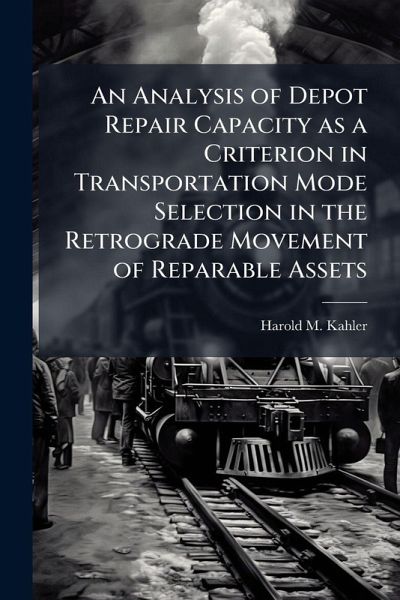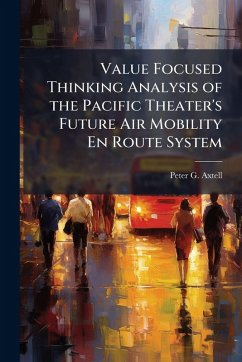
An Analysis of Depot Repair Capacity as a Criterion in Transportation Mode Selection in the Retrograde Movement of Reparable Assets
Versandkostenfrei!
Versandfertig in über 4 Wochen
15,99 €
inkl. MwSt.
Weitere Ausgaben:

PAYBACK Punkte
8 °P sammeln!
To support smaller reparable asset inventories, current Air Force logistics policies direct the "expedited evacuation of reparables and to the source of repair." Mode selection is based on the asset. Focusing on the asset is an efficient and effective method of getting assets to where they are needed in a timely manner in the forward portion of the supply pipeline. However, in the reverse portion of the pipeline, the demand for an asset may no longer be critical to how it is transported. The quantity of the asset at the depot may already exceed repair capacity. In this instance, rapid movement...
To support smaller reparable asset inventories, current Air Force logistics policies direct the "expedited evacuation of reparables and to the source of repair." Mode selection is based on the asset. Focusing on the asset is an efficient and effective method of getting assets to where they are needed in a timely manner in the forward portion of the supply pipeline. However, in the reverse portion of the pipeline, the demand for an asset may no longer be critical to how it is transported. The quantity of the asset at the depot may already exceed repair capacity. In this instance, rapid movement, results in the asset being added to the backlog already awaiting repair. Retrograde modal selection focus should shift to repair capacity. Since the depots face budget and manning constraints and do not operate on a continuous basis, their repair capacity is limited. With finite repair resources, the question of when an asset can be repaired should be involved in mode determination. This thesis will evaluate current Air Force retrograde transportation mode selection policy. Using Warner Robins Air Logistics Center reparable asset production data, this thesis will compare depot pipeline inventory for a random sample of reparable assets against the depot's repair capacity. If depot pipeline quantity is greater than the depot repair rate, then use of premium transportation is inappropriate, unless it is the lowest cost mode. The difference in cost between the mode used and the alternate mode will demonstrate the potential savings of using depot repair capacity as a determinant of mode selection. This work has been selected by scholars as being culturally important, and is part of the knowledge base of civilization as we know it. This work was reproduced from the original artifact, and remains as true to the original work as possible. Therefore, you will see the original copyright references, library stamps (as most of these works have been housed in our most important libraries around the world), and other notations in the work. This work is in the public domain in the United States of America, and possibly other nations. Within the United States, you may freely copy and distribute this work, as no entity (individual or corporate) has a copyright on the body of the work. As a reproduction of a historical artifact, this work may contain missing or blurred pages, poor pictures, errant marks, etc. Scholars believe, and we concur, that this work is important enough to be preserved, reproduced, and made generally available to the public. We appreciate your support of the preservation process, and thank you for being an important part of keeping this knowledge alive and relevant.







![The Cotton Mills Of South Carolina: Their Names, Location, Capacity And History. [from The News And Courier, Of Charleston, S.c.] Cover The Cotton Mills Of South Carolina: Their Names, Location, Capacity And History. [from The News And Courier, Of Charleston, S.c.]](https://bilder.buecher.de/produkte/67/67256/67256252n.jpg)




